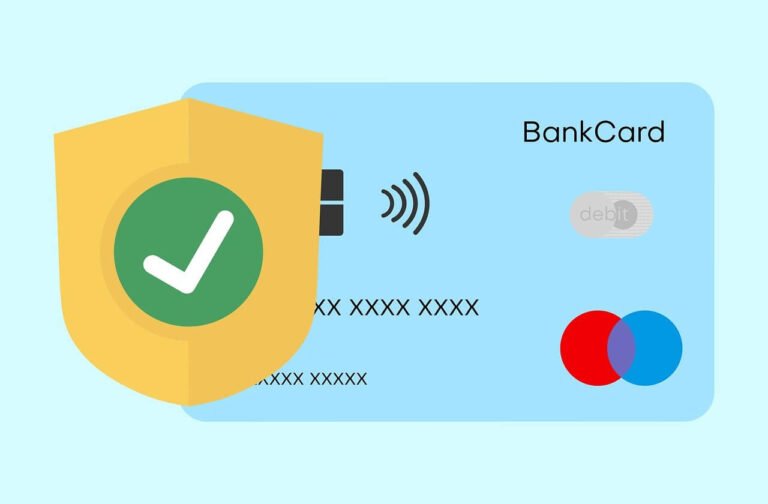How Interest Is Calculated on High Yield Savings Accounts? You’ve probably seen those attractive interest rates advertised by online banks, 4%, 4.7%, sometimes even higher.
But have you ever wondered how banks actually figure out how much money to add to your account each month? Understanding how interest calculation works will help you maximize your savings and choose the right account for your money.
The way banks calculate interest on high yield savings accounts might seem confusing at first, but it’s actually pretty logical once you break it down.
Let’s walk through exactly how your savings grow and what factors affect how much you earn.
What APY Really Means
When banks advertise their savings accounts, they show something called APY, which stands for Annual Percentage Yield. This number accounts for compound interest—the interest you earn on both your original deposit and on the interest you’ve already accumulated.
APY differs from APR (Annual Percentage Rate), which only shows the base interest rate without considering compounding. APY gives you the complete picture of what you’ll actually earn in a year if you leave your money untouched. That’s why it’s the most important number to look at when comparing savings accounts.
How Interest Is Calculated on High Yield Savings Accounts: The Basic Formula Banks Use
Banks calculate your interest using a specific formula that considers several factors. The main elements include your account balance, the interest rate, and how often the bank compounds your interest.
Here’s what goes into the calculation: your starting balance (called the principal), the annual interest rate, the number of times interest compounds per year, and the time period. When these elements combine, they determine exactly how much your savings grow.
Understanding Compound Interest
Compound interest is what makes high yield savings accounts powerful. Unlike simple interest that only applies to your original deposit, compound interest means you earn interest on your principal plus any interest you’ve already accumulated.
Think about it this way: In January, you earn interest on $5,000. In February, you earn interest on $5,000 plus the interest from January. In March, you earn interest on everything from January and February. This snowball effect continues month after month, making your money grow faster over time.
Daily vs Monthly Compounding
Not all high yield savings accounts compound interest the same way. The two most common approaches are daily compounding and monthly compounding, and more frequent compounding typically produces better returns.
With daily compounding, the bank calculates interest on your balance every single day and adds it to your account. This means each day’s interest becomes part of your balance for the next day’s calculation.
Also Read:
- High Yield Savings Account vs Traditional Savings Account: Which Is Better?
- What Is a High Yield Savings Account and How Does It Work?
With monthly compounding, interest gets calculated and added once per month. While daily compounding provides slightly more return than monthly compounding, the difference takes years to become substantial.
How Banks Calculate Daily Interest
Most high yield savings accounts use daily compounding because it benefits savers the most. Here’s how it works: The bank takes your annual interest rate and divides it by 365 days. This gives them your daily interest rate.
Every day, they multiply your current balance by this daily rate. That calculated amount becomes your interest for that day. The next day, they add that interest to your balance and recalculate. This process repeats every single day your money sits in the account.
A Real Example With Numbers
Let’s make this concrete with an actual example. Say you deposit $10,000 into a high yield savings account with a 4.50% APY that compounds daily.
The bank divides 4.50% by 365 to get a daily rate of about 0.0123%. On day one, your interest would be $10,000 × 0.0123%, which equals roughly $1.23. On day two, they calculate interest on $10,001.23, earning you another $1.23. This continues throughout the year.
After one full year with no additional deposits, you’d have approximately $10,460 in your account. That’s $460 in interest earnings just from letting your money sit there.
What Happens When You Add Money
Most people don’t just deposit money once and forget about it. When you add more money to your account, the calculation adjusts immediately.
Let’s say you start with $5,000 and add $200 every month. Each time you make a deposit, that new money starts earning interest right away. The $200 you add in January earns interest for 12 months. The $200 added in February earns interest for 11 months. Each deposit compounds for whatever time remains in the year.
What Happens When You Withdraw Money
Taking money out works similarly but in reverse. When you withdraw funds, you reduce your balance, which means less money earning interest going forward.
If you have $10,000 earning 4.50% and withdraw $2,000, your interest calculation now applies to only $8,000. You’ll earn less interest each day because you have less money in the account. This is why keeping your balance steady helps maximize your earnings.
The Impact of Balance Changes
Your account balance isn’t static—it changes with deposits, withdrawals, and interest payments. Banks recalculate your interest based on your actual balance each day.
Some people wonder if timing matters for deposits. Since most accounts compound daily, money you deposit on the 1st of the month earns more interest that month than money deposited on the 30th. However, over the long run, this difference becomes negligible if you’re saving consistently.
Why APY Is Higher Than the Interest Rate
You might notice that an account’s APY is usually slightly higher than its stated interest rate. This happens because of compounding.
An account with a 4.50% interest rate that compounds daily actually delivers a 4.60% APY because your interest earns interest throughout the year. The more frequently interest compounds, the bigger the gap between the interest rate and the APY.
Monthly Interest Payments
Even though banks calculate interest daily, most actually pay it to your account monthly. Throughout the month, they’re tracking your daily interest behind the scenes.
On a specific day each month (often the last day), they add up all the daily interest you’ve earned and deposit it into your account. This is when you’ll see your balance jump slightly. That deposited interest then starts earning interest the next day.
Changing Interest Rates
One important thing to understand: the interest rates on high yield savings accounts can change. Banks adjust their rates based on broader economic factors and Federal Reserve policies.
When you open an account at 4.50% APY, that rate isn’t locked in forever like it would be with a certificate of deposit. If the Federal Reserve raises or lowers interest rates, banks typically adjust their savings account rates too. Your future earnings could increase or decrease based on these changes.
Factors That Affect Your Earnings
Several things determine how much interest you’ll actually earn. The most obvious is your account balance; more money means more interest. The interest rate matters tremendously too, which is why high yield accounts beat traditional ones.
Time is another crucial factor. The longer your money stays in the account, the more compounding can work its magic. Even small rate differences become significant over months and years. Consistent deposits amplify the effect even more because you’re constantly adding fuel to the compounding fire.
Compare Different Accounts
When you’re shopping for a high yield savings account, comparing interest calculations helps you make smart choices. Two accounts might advertise similar rates but compound differently.
An account offering 4.50% APY with daily compounding will earn you more than an account offering 4.50% APY with monthly compounding. Always look at both the APY and the compounding frequency. The APY already factors in compounding, so it’s the most reliable number for comparisons.
Tax Obligation
The interest you earn isn’t free money in the eyes of the IRS. Banks report interest earnings over $10 to the government, and you’ll pay taxes on that income.
Your interest gets taxed as ordinary income at your regular tax rate. This happens regardless of whether you withdraw the interest or leave it in your account to compound. Some people don’t realize this until tax time, so plan accordingly.
How To Maximize Your Interest Earnings
Now that you understand how calculation works, you can use this knowledge to your advantage. First, choose accounts with the highest APY and daily compounding. Second, maintain higher balances when possible since interest applies to your entire balance.
Third, make deposits early in the month rather than late to capture a few extra days of compounding. Fourth, avoid unnecessary withdrawals that reduce your balance. Finally, let your interest accumulate in the account rather than withdrawing it so it can compound.
Common Misconceptions
Many people misunderstand how savings account interest works. Some think they need to keep money in the account for a full month to earn interest, but that’s not true; you earn interest every day your money is there.
Use Our Calculators
You don’t need to calculate your interest earnings manually. We provide calculators on our website where you can input your starting balance, monthly deposits, interest rate, and time period.
High-Yield Savings Account Calculator
Final Balance
$0.00
Total Deposits
$0.00
Interest Earned
$0.00
This high-yield savings calculator shows you projected earnings based on the account's compounding method.
How To Make Interest Work for You
Understanding interest calculation transforms you from a passive saver to an active one. When you know that every dollar starts earning interest immediately and that compounding accelerates your growth, you're more motivated to save consistently.
High yield savings accounts offer some of the best risk-free returns available right now. The combination of high interest rates and daily compounding means your money grows substantially faster than it would in traditional accounts. By keeping your money in an account with strong APY and letting compounding work over time, you're setting yourself up for better financial outcomes.
The math might seem complicated at first, but the principle is simple: your money makes money, and then that money makes more money. The longer this cycle continues, the more powerful it becomes. Now that you understand exactly how banks calculate your interest, you can choose accounts strategically and watch your savings grow more intentionally.



